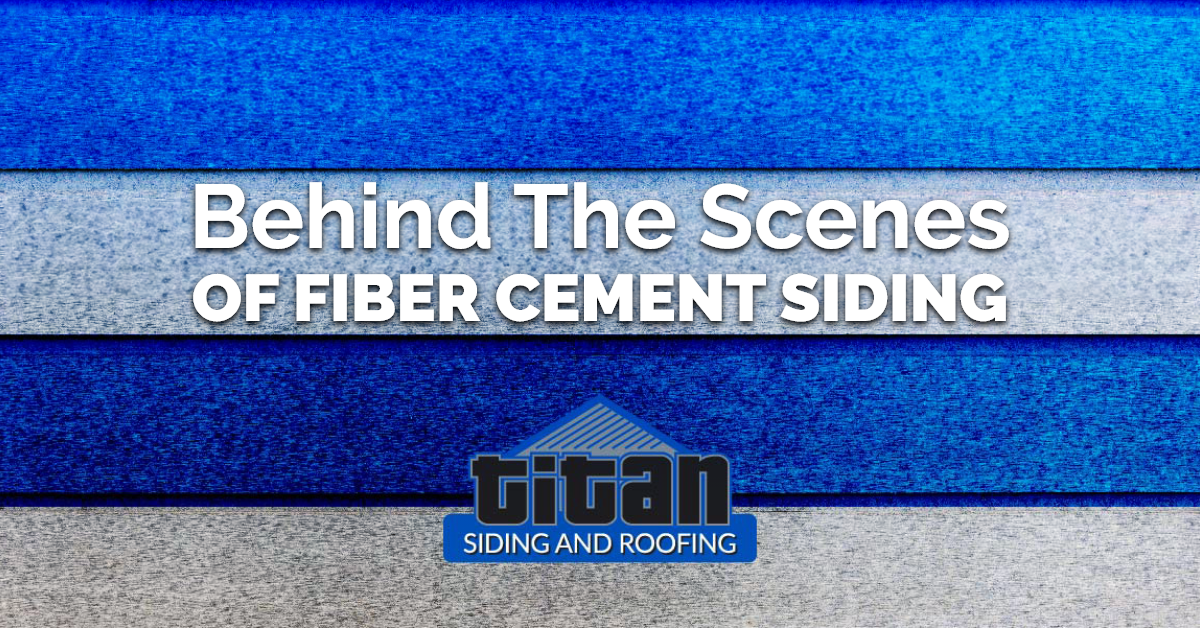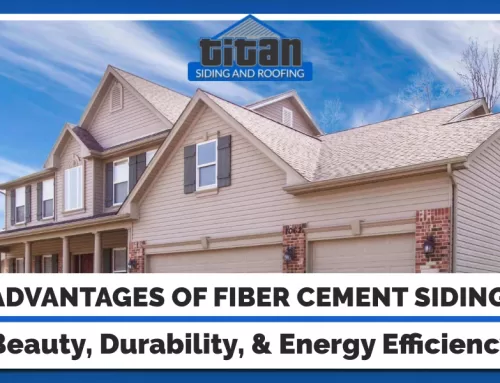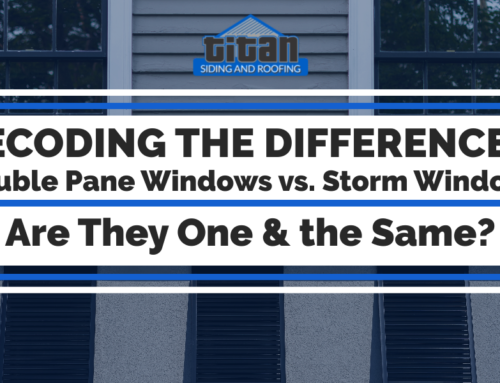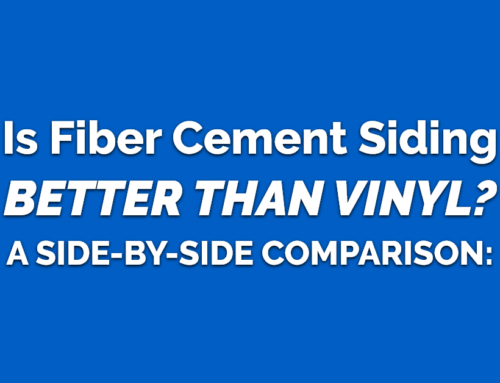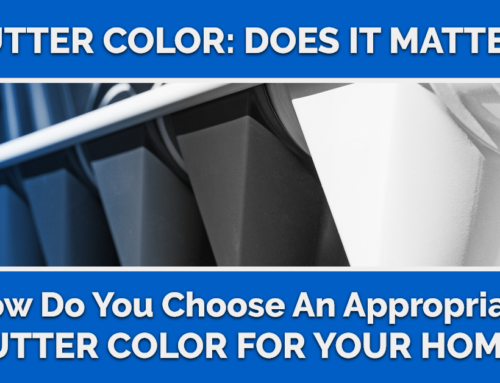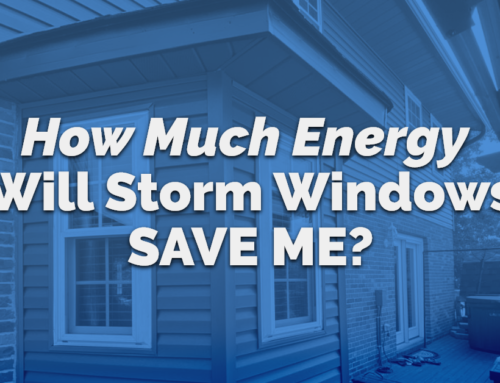Whether you’re choosing an exterior for a new home or considering siding replacement, you want to choose a material that will strike a balance between functionality, good looks, durability, and maintenance. Wood and vinyl have long been popular siding choices, but one which is increasing in popularity is fiber cement siding.
We’ll take you through the important information you need to know about fiber cement so you can make an informed decision about choosing it for your house.
What Fiber Cement Siding Is
Fiber cement siding is a building material used to cover the exterior of a home to protect it from the elements. Fiber cement is a composite material comprised of cellulose fibers, sand, water, and Portland cement – a combination resulting in an extremely durable material. This siding solution has been available for nearly 100 years but has recently seen an increase in popularity in the residential market. Originally, asbestos was used as the reinforcing material, but it has long been replaced by cellulose due to safety concerns.
Fiber cement siding comes in a wide range of designs, including plank, vertical, shake, lap, curved-shake, and a variety of geometric patterns. It’s available in a variety of textures, such as smooth, woodgrain, and stucco finishes, as well as a range of styles and pre-finished colors to meet any homeowner’s needs. In appearance, fiber cement siding can convincingly imitate the look of wood, stacked flagstone, natural fieldstone, or brick.
Benefits of Fiber Cement Siding
Highly Resistant to Damage
Fiber cement is considered the most resistant material to common enemies of residential siding. Its strength and moisture resistance makes it a great choice in places which experience many tornadoes and hurricanes.
Because of how it’s made, fiber cement holds up against long-term sun exposure, hail, rain, snow, and ice. The siding looks like wood but doesn’t act like it. Wood will warp, swell, and rot when exposed to moisture, but fiber cement won’t.
The lack of overlapping seams prevents mold or mildew from growing on the walls, making the home safer overall. Also, insects and animals which attack traditional wood siding show no interest in fiber cement.
Fire Resistant
Fire is one of the biggest worries of homeowners. Wood siding adds more fuel to a house fire, while vinyl siding melts and falls of the house when exposed to temperatures as low as 165 degrees. More than 90% of fiber cement’s composition is inflammable material. It has a Class A rating for fire and flame spread.
Environmentally Neutral
Fiber cement siding is manufactured from naturally occurring materials. There are no petrochemicals or gases used in its production. While fiber cement isn’t recyclable in its finished form, it does not produce dangerous toxins when it breaks down. Its ingredients are considered environmentally inert.
Wide Range of Style Selection
With a wealth of texture, size, shape, and style options, fiber cement can be made to resemble stucco, wood, or masonry. You do not have to sacrifice the traditional look of a home to enjoy the benefits of fiber cement.
The siding is available in a variety of colors. The material can easily be painted, which can be a huge bonus if you prefer to change things up every once in a while. It wears colors well and can reflect your style.
Long-Lasting
The average lifespan of fiber cement siding is roughly 50 to 75 years. Most manufacturer warranties will typically extend as long. If the siding was painted during the manufacturing process, there may be a warranty for the factory coat of paint guaranteeing against peeling, fading, chips, and other defects for around 15 years.
If you choose to have fiber cement siding installed on your house, it’s likely you’ll never have to replace it.
Fiber Cement Siding Maintenance
Fiber cement is a very low maintenance material, but you still need to learn how to maintain it the right way to sustain the beauty and value of the product. The extent and nature of maintenance will depend on the amount of weather and sun exposure, your home’s design and geographical location, and the landscaping near your house.
Here’s a list of fiber cement siding maintenance tasks:
- Installing gutters and downspouts if not already present in your home.
- Cleaning out your gutters, downspouts, and drainage to prevent keep water runoff from hitting your siding and damaging the structure.
- Inspecting caulking regularly around window sills, door frames, and other edges to keep moisture out. Inspect to see if it’s wearing out and re-apply caulk if needed.
- Washing the siding at least twice a year. This helps maintain the siding’s appearance and keeps mold and mildew from growing. To prevent the siding from fading or getting damaged when washing, use a garden hose and a soft brush to scrub the sides.
- Repainting when needed. A paint job on fiber cement siding will last between 7-15 years before fading. If you spot any peeling, chipping, or cracking paint, it may be time for a new coat.
- Keeping landscaping trimmed back and away from the siding.
- Adjusting sprinkler systems so they do not saturate the ground near your house or shoot on the siding itself.
Fiber Cement Siding Costs
Fiber cement provides excellent value overall. Typically, it costs less than synthetic stucco, brick, and some wood siding varieties. It’s more expensive than vinyl and equally or less expensive than composite and hardboard siding.
There’s no one-size-fits-all pricing when it comes to fiber cement siding. The actual cost will depend on size, color, style, and where it’s sold. The best way to get an estimate is to request a quote from a trusted local contractor who deals with fiber cement siding.
If you’re interested in fiber cement siding in the Greater Cincinnati area, look no further than Titan Siding and Roofing. We offer premium fiber cement products manufactured by James Hardie. Our team brings unparalleled attention to detail and customer service to all our fiber cement siding installations. Contact us today to get started!

